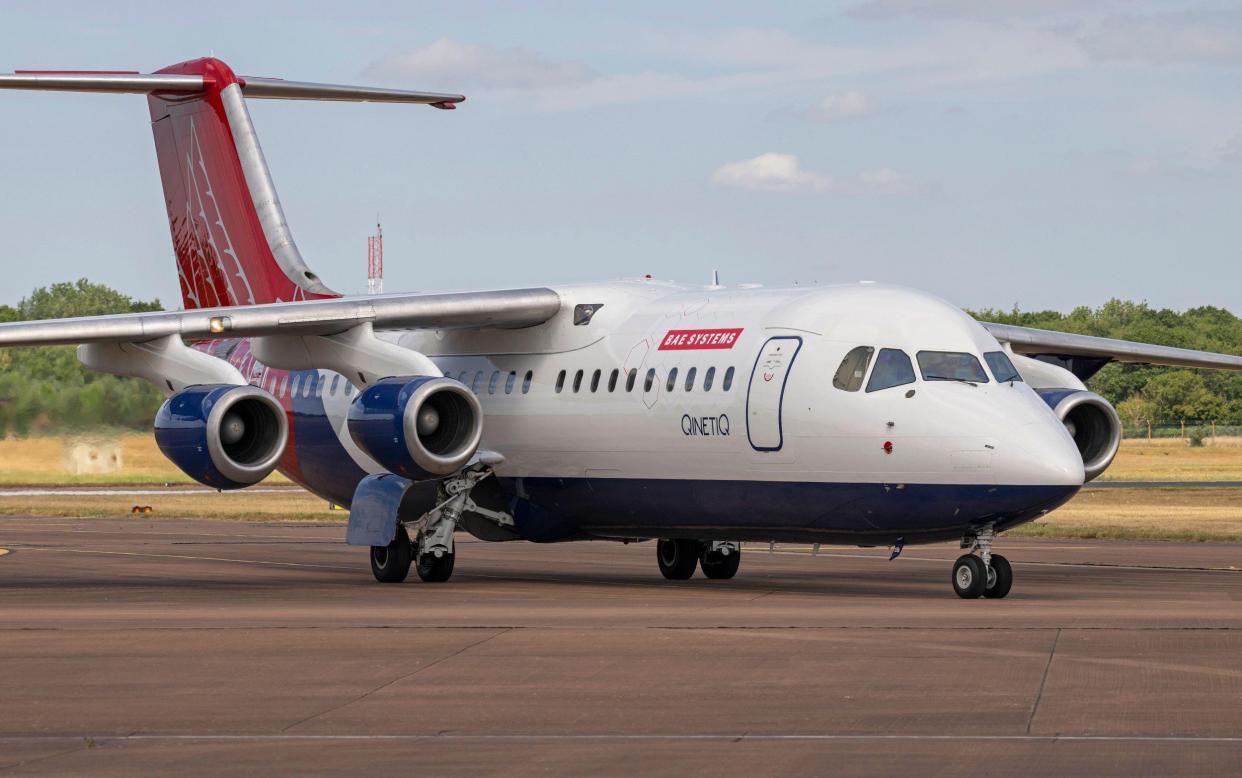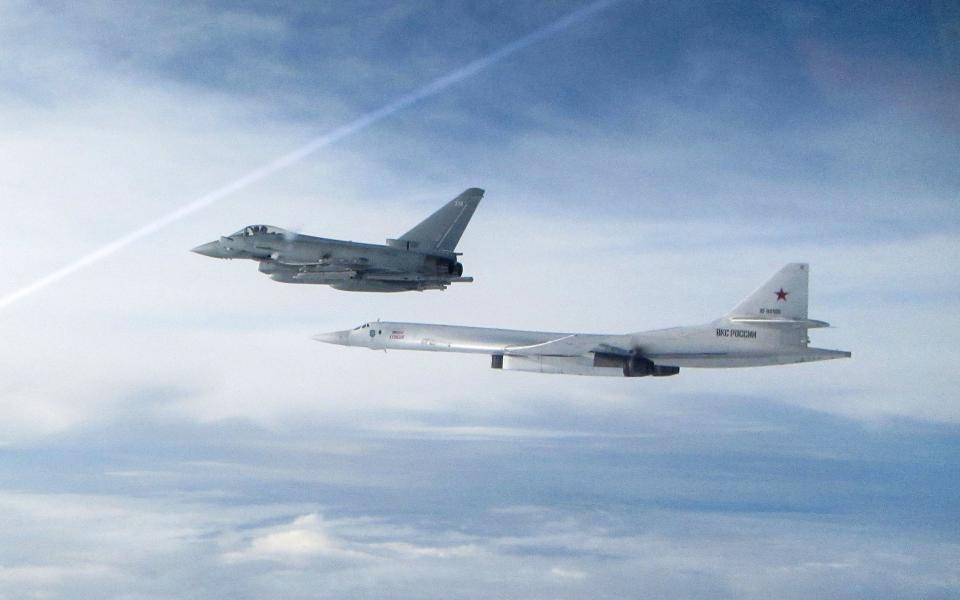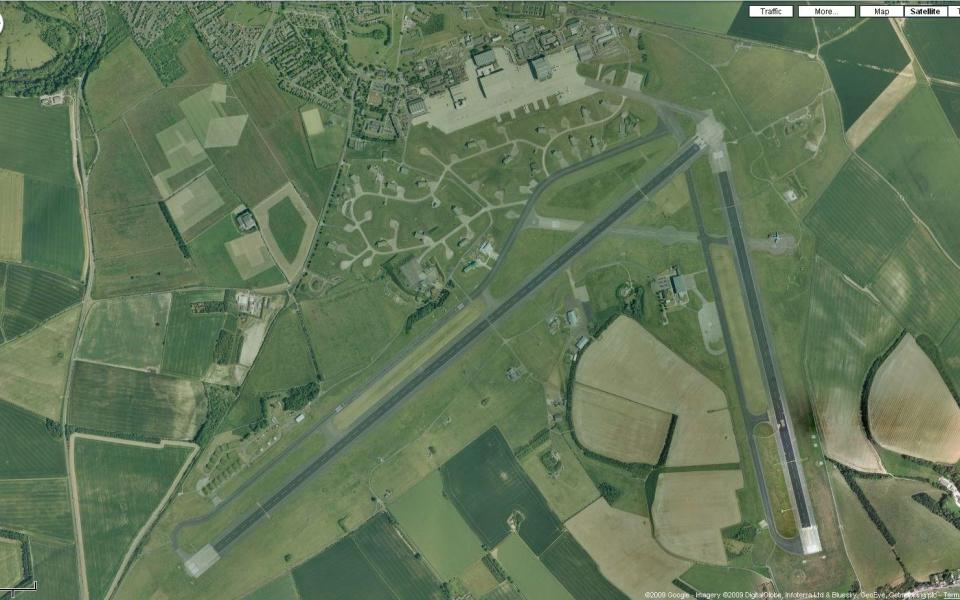British-built ‘unhackable’ navigational system flown in world first

A British-built unjammable quantum navigation system has been flown and operated in an aeroplane for the first time.
The breakthrough comes amid an increasing threat from satellite jammers that stop traditional GPS working on both civilian and military planes.
Current navigation methods rely on satellites for navigation and this is susceptible to hack attempts or technological interference, which cripple existing guidance systems.
Quantum, however, is a self-contained system that can navigate without relying on any external infrastructure.
Politicians and officials have become acutely aware of the risk posed by GPS blocking in the wake of the Russian invasion of Ukraine and a surge in electronic warfare.
Grant Shapps, the Defence Secretary, recently had his RAF jet’s navigation system tampered with by a foreign state, thought to be Russia.

The world-first, demonstrated at Boscombe Down, raises hopes Britain can meet its target of protecting British planes from GPS jamming by 2030, thanks to quantum-powered back-up systems.
A Whitehall source told The Telegraph that GPS jamming on civilian aircraft is relatively rare but “the world around us continues to present evolving threats”.
“By building cutting-edge secure navigation systems that effectively shut out the risks of GPS jamming, we ensure British planes can travel safely and without interference,” they added.
Quantum navigation, unlike GPS, is able to determine speed and duration – and therefore position – by harnessing the properties of ultracold atoms.
Scientists have been trying to turn the theory into deployable technologies for several years but the intricate systems are delicate and have never before been made to work outside of a lab.
A British project, backed by £8 million of Government funding, has managed this for the first time ever in a commercial setting.
Andrew Griffith, the science minister, during an exclusive test flight on the plane, told The Telegraph there has been a “quantum quickening” brought on by the current geopolitical tensions as countries seek to protect themselves from GPS vulnerabilities.
“This is a real world issue,” he said. “We’re seeing, at the lowest level, car thieves using jammers but we’ve also seen the Secretary of State for Defence’s RAF plane being allegedly interfered with by other State actors.
“There is a lot of jeopardy out there now to single source reliance on the GPS system. What’s really exciting about today is coming out of the lab and going into a real-world environment.
“There’s more interest, more capital, more innovation, and more clarity from the government about the importance of quantum.
“You could make a case that, until today, quantum was the least well understood of the five pillars of the Science and Technology framework but today is quantum’s coming out party.”
The pioneering system, built in Oxford by Infleqtion, has undergone eight hours of testing on a custom Avro RJ100 operated by QinetiQ at the MoD base at Boscombe Down, near Salisbury.

Half of the plane’s cabin space was dedicated to racks fitted with cutting-edge technology.
On the final test flight, The Telegraph saw how two racks, about 4ft tall, contained the lasers, atoms and wires needed for the quantum navigation technology to function.
Experts said it could fit on one rack and will soon be miniaturised even further with an eye on future wide-scale commercial deployment.
QinetiQ, which was also part of the consortium making the DragonFire laser drone defence system to be fitted to Navy ships, runs the Boscombe Down site and its chief test pilot captained the flight, which saw a range of aerial manoeuvres performed to put the novel navigation system through its paces.
A team of on-board physicists and aeronautic engineers tended to the quantum navigation system, as well as an onboard quantum clock, which is the size of a record player.
The first few tests of the quantum navigation equipment failed to work as the vibrations from the aircraft’s engines, as well as a host of other noise-inducing factors, prevented the process from working properly.
But after stripping the system back to its bare bones and rebuilding it more robustly, the system worked as expected.
Quantum navigation works by using an array of lasers to cool a cloud of rubidium atoms to a fraction above absolute zero (-273°C). A hundred million atoms, weighing just a billionth of a billionth of a gram, are void of energy and stop behaving like normal particles. At these cold temperatures, the cloud becomes not a solid, liquid or gas but another state of matter known as a Bose-Einstein condensate.
This unusual substance behaves like both a wave and a particle because the coldness brings the quantum properties of the atoms to the fore.
Lasers split the cloud of atoms and each entity then travels independently before being recombined. The way these interact can then be analysed to reveal speed, distance and position.
The Bose-Einstein condensate is the fifth state of matter that was first theorised 100 years ago and only created in a lab for the first time in the 90s.
Dr Keshav Thirumalai, the inertial portfolio lead at Infleqtion, told The Telegraph while 10,000ft above Wiltshire: “Based on that interference pattern, you can infer the position of the aircraft.
“Getting all of this working to this point is a fantastic achievement,” he added.
The next step is to combine the working quantum mechanism with data from the plane itself to generate navigable information.
Henry White, the lead technologist (sensing) at BAE Systems, which is part of the consortium that made the technology, said: “Now this demonstration has shown that the BEC continues to be stable during flight, the next step is to perform that navigation function, allowing us to use this as a standard piece of equipment during navigation.
“Investing at this early stage has helped cement the UK’s position as a leader in quantum technology, achieving a world first with this flight demonstration.”

